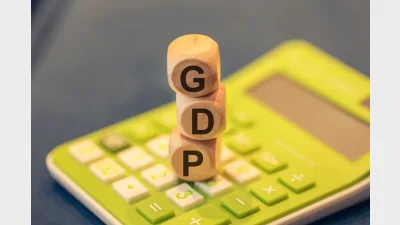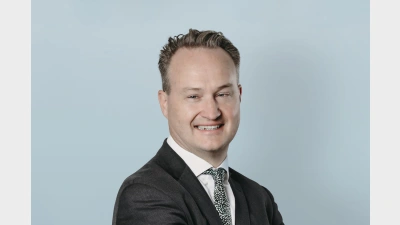One on one with Brighter Super: Leveraging growth and scale



Super Review’s one-on-one series aims to spotlight key investment insights from the superannuation sector.
This week, Mark Rider, chief investment officer at Brighter Super, unveils how the fund’s investment strategy has evolved off the back of two mergers in three years and where he sees further opportunities.
How do you think Brighter Super’s portfolios have changed following the mergers?
It's been three years in the making, preparing our portfolios at the moment. The first of two mergers, Energy Super with LGIAsuper, was in July 2021, and then in April 2022, Suncorp Super joined the family.
Through that fairly tumultuous period, inflation picked up, interest rates have risen, and we’re now seeing inflation come tumbling down, economic growth slow, and interest rates beginning to retrace around the world.
When I look at the fund that we have, as we’ve built those three funds together, it’s one where we’ve avoided having any big biases, particularly the equity portfolio, but elsewhere towards let’s call it factors which have been driving portfolios. Take the initial downturn during 2022, it was very concentrated in decreasing growth stocks, venture capital PE. The fund that we had built was one which had a fairly factor neutral exposure to equities.
On the LGIA side, there was a lot of credit in the portfolio, a lot more than where our peers probably were, so we took the opportunity over the last few years to reduce that exposure. At the same time, what we were able to do is build up our government and investment grade bond portfolio to provide more defensiveness.
The MySuper fund is evolving now where we’re working towards increasing the exposure to private equity, to infrastructure exposure, and we’re looking to make the portfolio more resilient to what we think will be a much more volatile economic environment, whether in economic growth, whether in inflation or interest rates that we’re facing.
I think another important consideration we’ve taken on board is interest rates. While they’re coming off, we think that those days of zero rates are behind us.
To an extent, it’s right now that a lot of what we’ve done [with the mergers] has been coming in as we’ve integrated the portfolio and made shifts.
On 31 May 2024, we rationalised via asset class to come back from 50+ options down to around 12. Now, what we’re doing is looking ahead.
Has increased scale opened any more doors that previously might not have been investment options to consider?
Having worked in a $2 billion fund and now in a more than $30 billion fund, I can see the benefit of that scale. One of the points is that, from an administration side, fees, particularly for Suncorp members, are down by 70 per cent or more. Because we’re truly integrating the three funds that we’ve got now, down to one set of options, one admin platform, and one investment team managing a group of them, you can get those admin advantages.
On the investment side, given our scale now, we are more important to funds out there. Our approach is one where we are not looking to internalise. We’re not aiming to have the scale where I think internalisation makes sense, so it’s working in partnership with fund managers to actually drive a return. One way we’re doing that is in unlisted assets where we’re increasingly looking for and participating in co-investment opportunities.
I think one of the things which has changed for us as well, with that additional scale and that ability to undertake probably more targeted investments, is that we’ve made a commitment to invest $500 million in Queensland over the next three to five years, on top of the billion dollars we’ve already got. The scale that we have now means that we can do that and we’ve been pleasantly surprised as we’ve gone out to the managers and let them know what we’re attempting to do, a lot of opportunities have come up.
We’re in the process of working through it, but there’ll be a win-win where we can invest in the communities where our members live – 85 per cent of the assets under management of Brighter Super are by people who live in Queensland – and we can also generate returns for their retirement.
What are other areas where you’re finding opportunities?
One of the particular areas we’re looking into is to play a part in the energy transition, whether here or overseas, and Queensland’s got quite some ambitions around reducing emissions quite aggressively. But it’s not just there, it’s the rest of Australia and around the world.
There’s also the digital side which is increasingly coming about, whether it being in data centres or fiber [networks].
As we get larger, we’re trying to still have a blend of unlisted assets, in particular infrastructure.
We’ve got airport exposure, transport exposure, energy exposure – we’ve got pipelines around the world. What we’re looking to do now, at the margins, is try and move the portfolio towards those areas where we’re assessing there will be superior opportunities.
Private equity has been a hot topic in the news lately. How are you thinking about this in your portfolios?
Private equity plays a key part in our portfolios. It does provide exposures to industries which are quite different to what you can get in Australia. There’s a whole range of different ways you can play private equity, from venture capital up to the pre-IPO. Our approach has been one where it’s probably been a bit less speculative than the venture capital side of things, more mid-market buy-out, which we’ve found as being quite robust.
For us, it provides diversification to the fund. It certainly comes with its risks and we’re aware of that. In our mind, yes, you can build a simple bond/equity portfolio and they can generate good returns in most environments, but not in all of them, and the environments that we get most concerned about are periods where the risk is of higher inflation. Equity markets generally don’t perform that well and therefore private equity can provide something a bit different. There are going to be winners and losers, but for us, it’s all about trying to diversify that risk.
When it comes to weighing options between Australia versus overseas, what’s your thought process there?
Over the past 12 months in the MySuper fund, we’ve reduced our strategic asset allocation to Australian shares from 27–24 per cent, and that was driven by an assessment that the concentrated nature of the Australian market poses risks in itself.
I think it’s particularly evident over the last 12 months or so. When you look at the areas of strength in the market, it’s been the banks, and the great area of weakness has been resources, and that side is intimately linked with what’s going on in China.
Overseas is not without its risks as well. The Magnificent Seven have been a key driver of what’s been going on there, but it is a more diversified market. It does have access to areas of technology, such as in AI-related industries that we don’t have, so we see great opportunities there.
Recommended for you
Economic growth was weaker than expected, once again highlighting an economy largely sustained by population growth and government spending.
In this latest edition, Anna Shelley, CIO at AMP, shares the fund’s approach to current market conditions and where it continues to uncover key opportunities.
The mega fund has announced a $2.2 billion investment in a leading data centre platform, bringing its global real assets portfolio to nearly $60 billion.
In this latest edition, Australian Retirement Trust’s head of global real assets Michael Weaver explains the fund’s approach to finding new opportunities as it surpasses $300 billion in funds under management.












